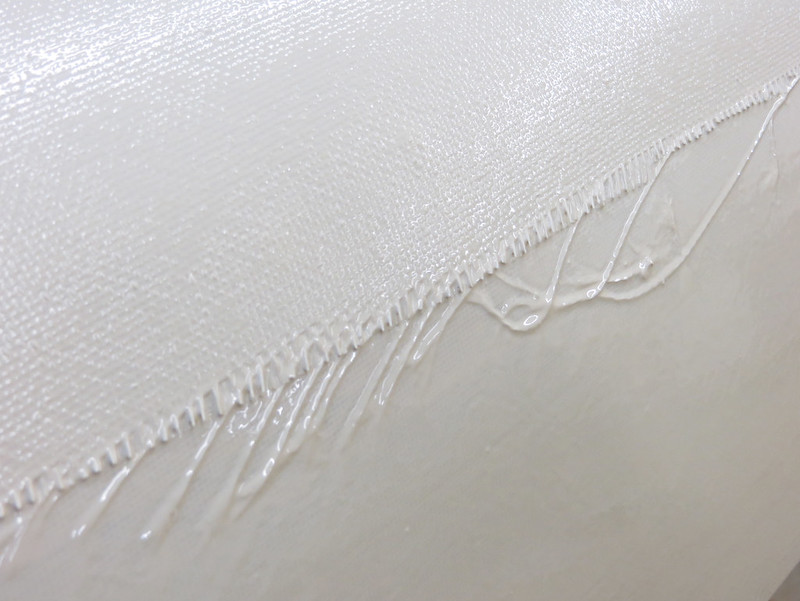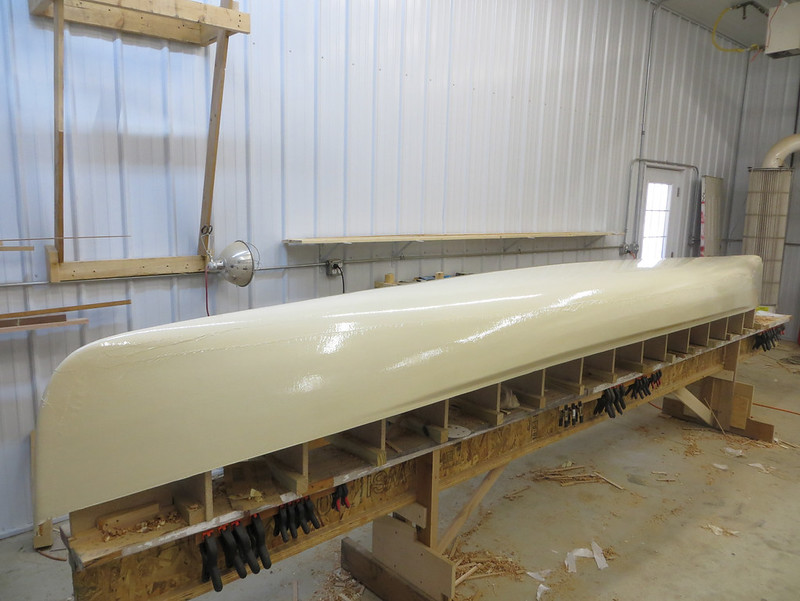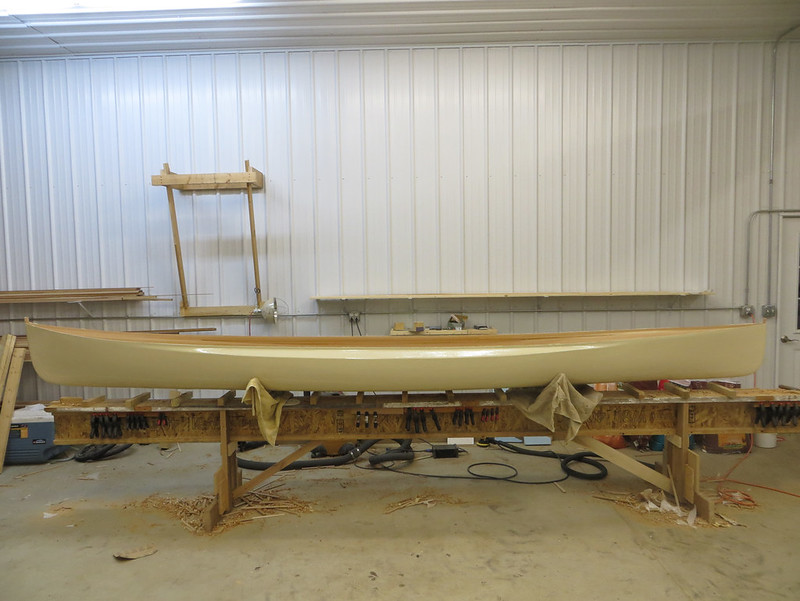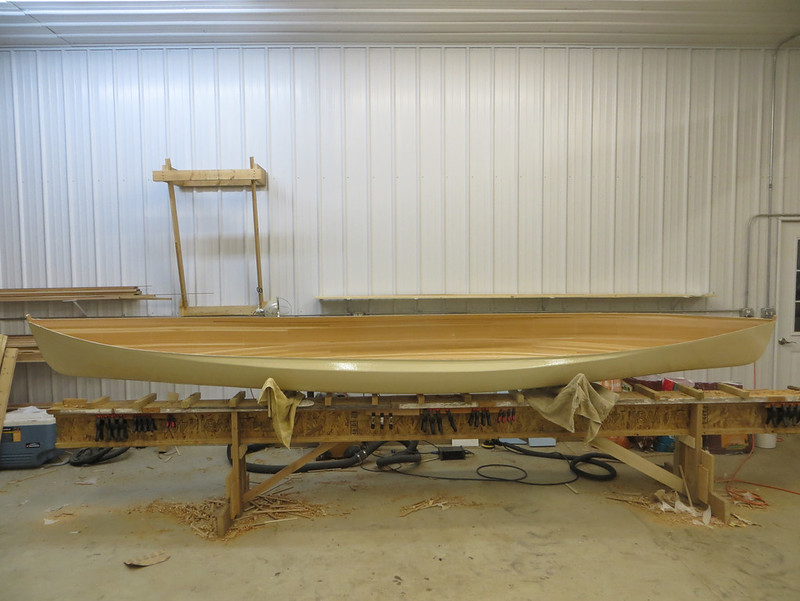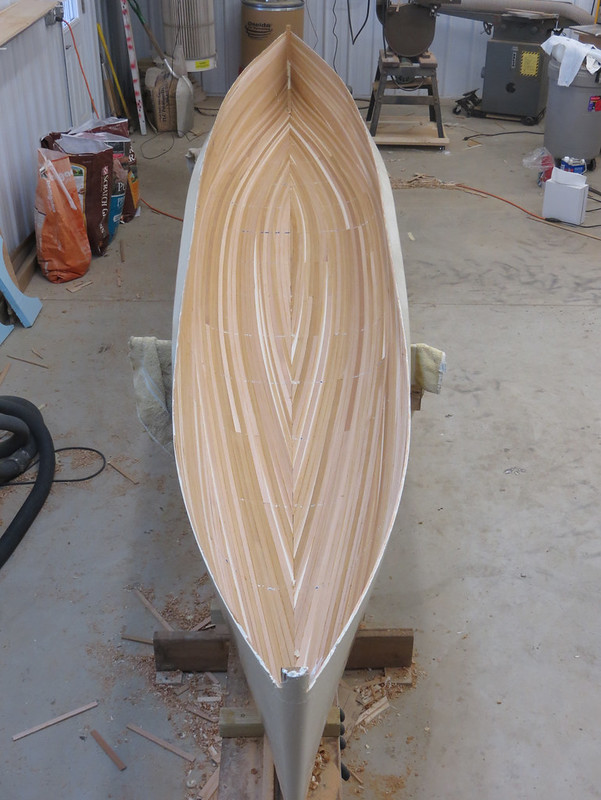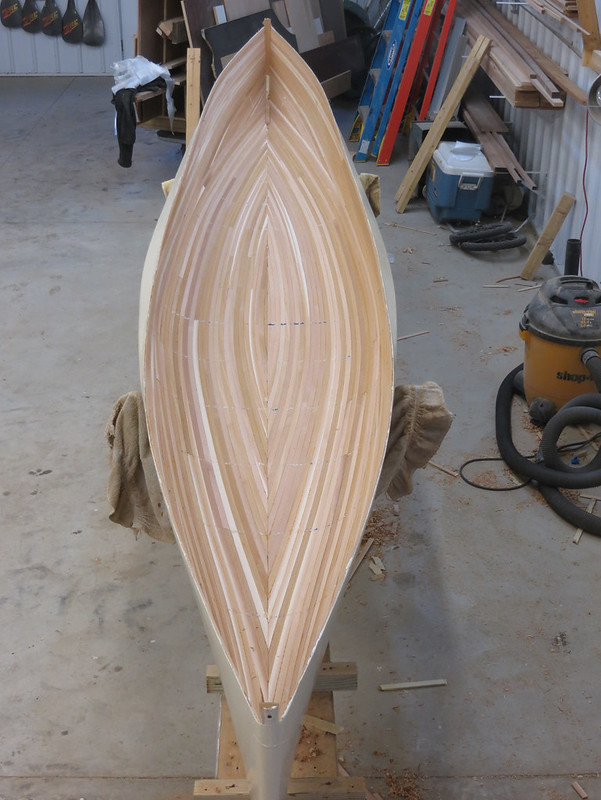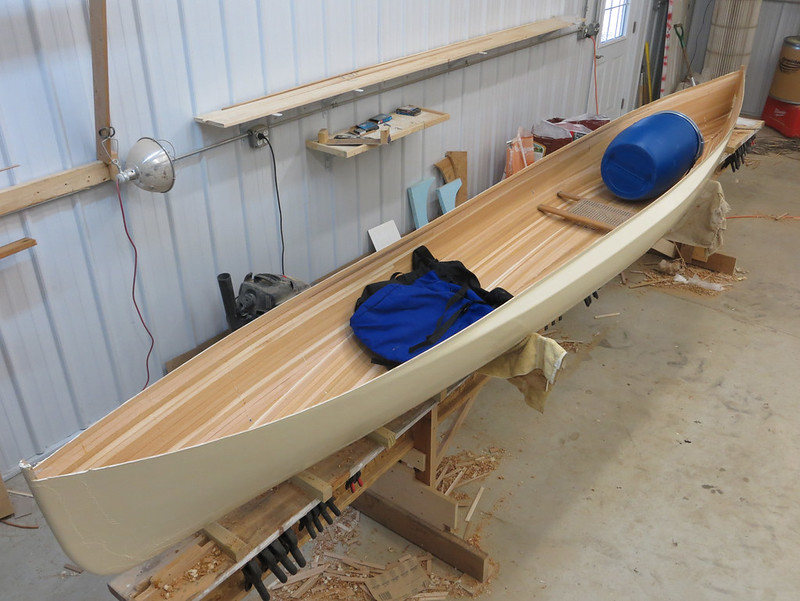Ha! That's pretty good.
I had a hard time keeping it secret but surprises are fun. Wetting it out certainly was different. Lots of second guessing on whether or not it was fully wet out or not and any little stray strand of fiberglass, which would normally be nearly invisible, looks like a piece of 1/4" rope laying on the hull. If you want to highlight every flaw in the hull and finish then using a solid color is definitely the way to go. Thankfully I haven't noticed any flaws in the hull yet. We'll see what it looks like after the weave is filled and it's been sanded flat.
I did take a peak underneath and it looks like my fill coat must not have been heavy enough to fill all the staples holes and gaps, I see some pin points of white. I doubt it will be pretty when the forms are knocked out.
Hey Stripperguy Mike: If you can pull yourself off the slopes long enough talk to me about carbon over foam gunwales. How easy/hard was it? Would you do it again? Would you do it differently? I don't know if that's what I'm going to do with this boat or not but I need to figure it out soon so I can get materials ordered.
How hard was it to keep a neat edge with the carbon tape? Seems like that would be difficult and that it would wander all over.
What about slipping a carbon sleeve over the gunwale and wetting it out on the bench before putting it into place? The edge of the hull would pull everything tight as it slips into the groove cut in the foam. Sounds like it would be tidier but it would be impossible to smooth out wrinkles or adjust the cloth after putting it in place. If it worked that would keep the carbon neat and then a layer or two of fiberglass tape could go over the top and it wouldn't really matter if those edges stayed perfect since they'll be clear.
Alan
I had a hard time keeping it secret but surprises are fun. Wetting it out certainly was different. Lots of second guessing on whether or not it was fully wet out or not and any little stray strand of fiberglass, which would normally be nearly invisible, looks like a piece of 1/4" rope laying on the hull. If you want to highlight every flaw in the hull and finish then using a solid color is definitely the way to go. Thankfully I haven't noticed any flaws in the hull yet. We'll see what it looks like after the weave is filled and it's been sanded flat.
I did take a peak underneath and it looks like my fill coat must not have been heavy enough to fill all the staples holes and gaps, I see some pin points of white. I doubt it will be pretty when the forms are knocked out.
Hey Stripperguy Mike: If you can pull yourself off the slopes long enough talk to me about carbon over foam gunwales. How easy/hard was it? Would you do it again? Would you do it differently? I don't know if that's what I'm going to do with this boat or not but I need to figure it out soon so I can get materials ordered.
How hard was it to keep a neat edge with the carbon tape? Seems like that would be difficult and that it would wander all over.
What about slipping a carbon sleeve over the gunwale and wetting it out on the bench before putting it into place? The edge of the hull would pull everything tight as it slips into the groove cut in the foam. Sounds like it would be tidier but it would be impossible to smooth out wrinkles or adjust the cloth after putting it in place. If it worked that would keep the carbon neat and then a layer or two of fiberglass tape could go over the top and it wouldn't really matter if those edges stayed perfect since they'll be clear.
Alan

